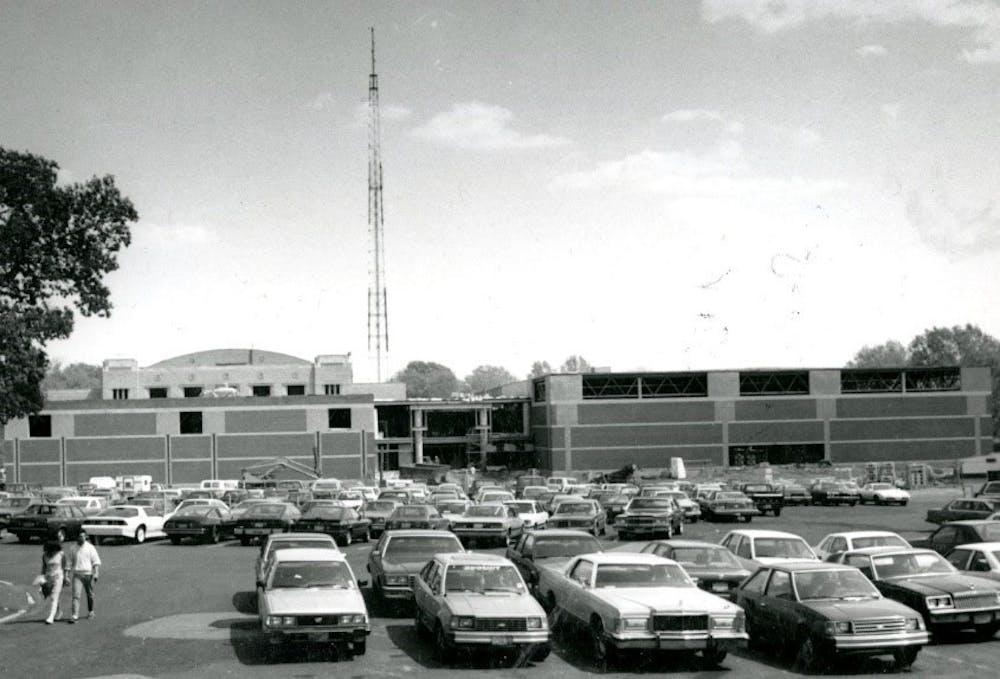SHU has changed in appearance over the years through various construction projects dating back to the initial plot of land in the 1860’s.

“The initial 60-acre parcel of land obtained by Seton Hall was transformed into a burgeoning collegiate setting,” said Alan Delozier, the University archivist, “(it) featured the Main College Building which (included space for administrative offices, classrooms and dormitory rooms), recreational facilities (baseball and football fields) and agricultural facilities (garden and dairy) for in-house food production.”
In March of 1886, a fire destroyed the Main College Building in the beginning of Seton Hall’s fourth decade. However, according to Delozier, SHU administration was able to remedy the situation quickly by moving all main operations to Alumni Hall, just as they had done after a fire 20 years prior.
After the detrimental fire in 1886, Seton Hall continued to grow by building its first library facility, Marshall Hall, at a cost of $35,000.

Delozier explained that Mooney Hall opened in 1910 and briefly served as the Main College administrative center before being home to Seton Hall’s high school division. This period also saw the construction of an infirmary, renovation to the Chapel of the Immaculate Conception and the opening of Bayley Hall, which housed Seton Hall Grammar School for a short time.
During the 1950s, 13 temporary barracks erected on campus were torn down as attendance levels gradually stabilized. Bishop Hall, today known as Boland Hall, was opened and it served as a student dormitory with the barracks gone.

“The 1960’s were a time of transition,” Delozier explained. “Accomplishments abounded as the Bishop Dougherty Center (student union) was built in 1962 and the Humanities Center (Fahy Hall) made its appearance six years later.”
Recent Seton Hall students have been able to experience some major changes first-hand to the University with the renovations of the Walsh Gymnasium in 2013 and the Chapel of the Immaculate Conception a few years prior. SHU also expanded with the Science and Technology Center in 2007.
“ A new 14,000 square foot addition to the Recreation Center was completed in 2013 and work on upgrading the first college building, Stafford Hall, has likewise been completed. Additional improvements were made to Aquinas Hall, a co-ed residential space in the middle of campus, along with an expansion to the Parking Deck for staff and commuter student convenience was also finished in 2014,” Delozier added.
This past year, the University decided to build a Welcome Center by the main gate of campus so that, when prospective students and parents enter, it is the first thing they will see. The Welcome Center will be a place that interested students go when coming for tours of the University. With this current project, many of the students on campus have mixed feelings as to whether or not this new construction is beneficial to the campus.
Junior finance major Mikaela Milano expained that construction could be beneficial as long as student needs are considered.
“I think it’s a good idea to focus on construction and expansion but I think they are not focusing on the right parts. We need better dorms and amenities, classrooms and social areas for students, not a Welcome Center with administrative offices. I know the Welcome Center will have rooms for students to use in it, but it just feels like we can do better,” Milano said.
Other students feel that the Welcome Center is a great idea but do not like the fact that commuters are losing parking spaces because of it.
“Although a Welcome Center used as a single-stop location for new people coming into campus to stop by and get information from is a great idea, as opposed to numerous buildings around campus, the loss of those 100 plus parking spots has taken a toll on commuters,” senior criminal justice major Nicholas Keyes siad. “I don’t disagree with the focus on expansion,” Keyes added. “Making our school more accessible and modern but the lack of thought to our mostly commuter-based student population is shameful,” Keyes said.

Other students have no problem with the new construction.
“I think it is fine and I like that they only do construction on one building at a time. It’s pretty fiscally responsible and doesn’t create too much of a sore on campus,” sophomore political science major Adrian Orozco said. “I think the Welcome Center would benefit all students considering its rooms will have a larger capacity than the Main Lounge, one of the larger rooms here. It would really help clubs and departments that host events that might be too big for the Main Lounge area.”
Although the Seton Hall community has differing opinions on how they feel about the most recent construction, the University continues to grow not only structurally and academically. Delozier explained this growth.
“In reflecting on school history and preparing for the semester ahead, the varied lessons taught in the classrooms of Setonia have endured as we move forward in service to the community as a place that continues to celebrate the mind, heart, and spirit,” Delozier said.
Elena Gavin can be reached at elena.gavin@student.shu.edu.





